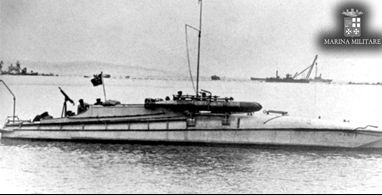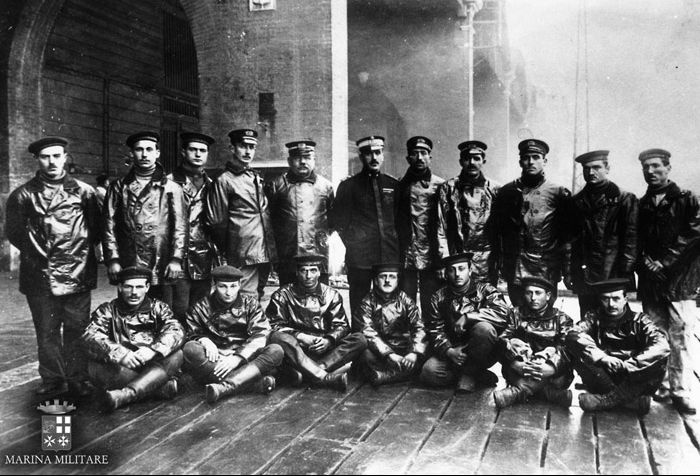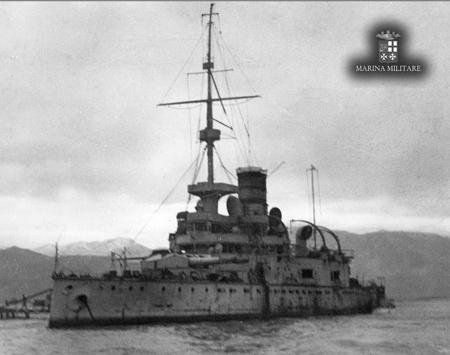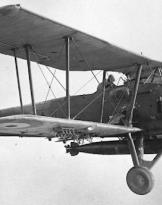Already on November 18 a destroyer squadron, composed of Audace, Abba, Ardente and Animoso beats, early in the morning, the Austrian trenches at Revedoli with 600 cannon shots from 102mm. The action, which raises the enthusiasm of the Italian troops and the ire of the Habsburg generals, is renewed the following day by the fighters Stocco, Orsini, Sirtori and Ardito, who shoot 100 shots per piece against the enemy lines between Revedoli and Caorle; the 20 November is the turn of the opposing positions at Grisolera. That target is again attacked the 23, this time from well 8 destroyer.
The enemy reaction, entrusted to the coastal batteries and the planes, proved ineffective. To add, as the British say, offense to insult, on 25 November the gunboats Capitano Sauro and Folgore - two small former Habsburg merchant ships captured in 1915 - even go up the Piave for 5 kilometers, shelling and machine-gunning all the Austrian strongholds one by one. sighted.
For its part, the Austro-Hungarian navy, in order to support the advance of its army from the sea, had transferred the battleships Wien and Budapest to Trieste. These battleships were both damaged on 16 November, in front of Cortellazzo, by the precise shot of the 152 mm coastal battery commanded by Lieutenant Bruno Bordigioni; although forced to withdraw from the subsequent intervention of the Italian naval units, they continue to represent, to all intents and purposes, a constant potential threat to the Italian seafront on the Piave.
 On the night between 9 and 10 December 1917 the MAS 9 (commander lieutenant Luigi Rizzo, creator of that long-studied enterprise since the spring) and 13 (chief helmsman 1st class Andrea Ferrarini) set sail from Venice, under the escort of the 9PN and 11PN torpedo boats. After almost two hours of hard and silent cutting, by hand, of the cables of the obstructions, the two MASs penetrate the Vallone di Muggia, sailing slowly and without noise on the electric motors. After a last reconnaissance, destined to confirm the lack of torpedo nets in the port basin, the MASs launch at close range. The Wien, hit amidships, sinks in a few minutes. The opposing reaction does not prevent the small torpedo boats from leaving that port and returning unharmed to the base.
On the night between 9 and 10 December 1917 the MAS 9 (commander lieutenant Luigi Rizzo, creator of that long-studied enterprise since the spring) and 13 (chief helmsman 1st class Andrea Ferrarini) set sail from Venice, under the escort of the 9PN and 11PN torpedo boats. After almost two hours of hard and silent cutting, by hand, of the cables of the obstructions, the two MASs penetrate the Vallone di Muggia, sailing slowly and without noise on the electric motors. After a last reconnaissance, destined to confirm the lack of torpedo nets in the port basin, the MASs launch at close range. The Wien, hit amidships, sinks in a few minutes. The opposing reaction does not prevent the small torpedo boats from leaving that port and returning unharmed to the base.
The sinking of this battleship is the first great Italian success on the sea of the Great War, achieved after years of tenacious efforts. The action, well planned, is skilfully communicated and valued in order to underline the Nation's turnaround after almost two months of crisis.
The creator and convinced supporter, since 1915, of the strategy of the "battle in port" is Admiral Paolo Thaon di Revel, Chief of Staff of the Navy in 1915 and again in 1917-1919.
Always at the forefront, the future great admiral is constantly open to new ideas, from naval aviation to submarines to MAS and armed trains, and encourages the initiative of his sailors, not hesitating to check the "scene" for himself. of the forcing of opposing ports, such as when one night in September 1917, he pushed himself aboard a motorboat a few hundred meters from the Trieste obstructions during the final drafting of the Rizzo plan.


Source: Military Navy












